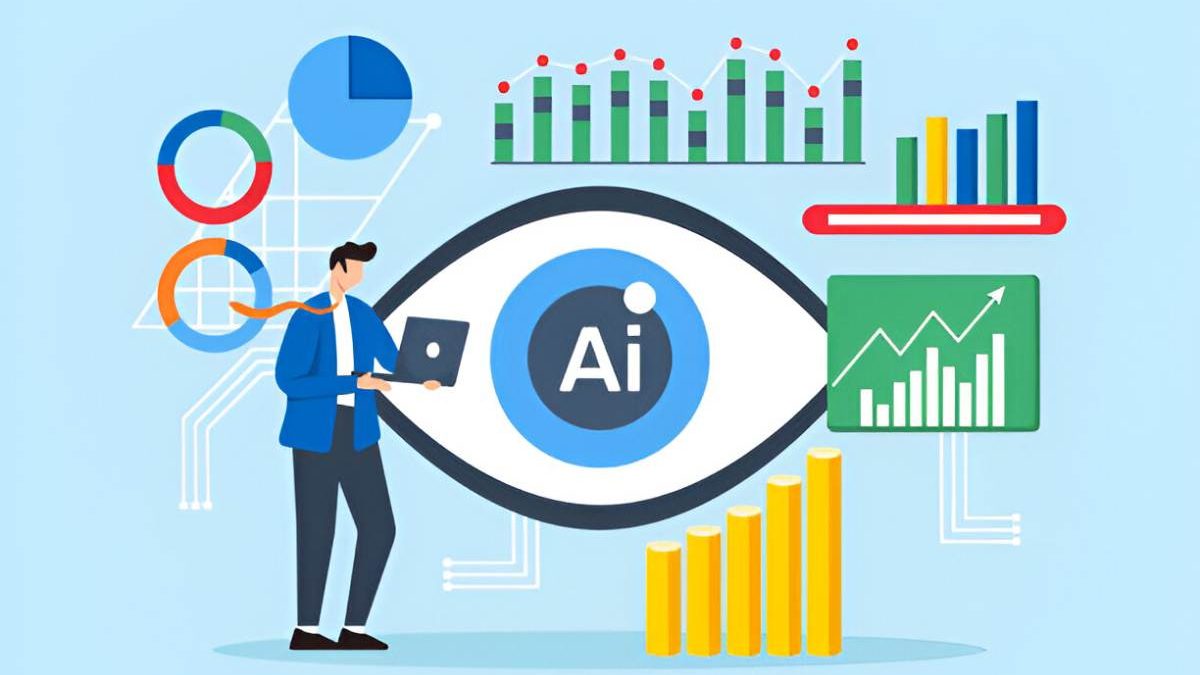As of April 2025, AI-driven data analysis tools have significantly evolved. What used to take hours of manual spreadsheet crunching can now be done in seconds with the help of intelligent platforms that combine automation, machine learning, and natural language processing. These tools are changing the way businesses analyze information, uncover trends, and make decisions—faster, smarter, and with less effort.
Here are the top 10 AI data analytics tools to consider in 2025, each offering unique capabilities that can streamline your workflow and boost your data confidence:
Table of Contents
1. Formula Bot
Formula Bot is like having a data analyst on speed dial. It allows users to conversationally interact with their data by asking questions, running queries, and generating custom visualizations—all in plain English. Whether your data lives in Excel, Google Sheets, or platforms like Google Analytics, Formula Bot can connect, analyze, and summarize it with ease. It also supports qualitative analysis like their sentiment analysis tool, text extraction, and classification, making it a powerful tool for both numbers and words. Bonus: It features an Excel AI Formula Generator that transforms natural language into formulas instantly.
2. Tableau
Still a fan favorite in the BI world, Tableau helps users turn raw data into interactive dashboards and clean visualizations. It connects with a wide range of sources—from spreadsheets to cloud platforms—and remains a gold standard for teams that want deep visual storytelling without diving into code. While not AI-first, its analytics and automation features continue to evolve.
3. Power BI
Microsoft’s Power BI is a powerful analytics platform that’s tightly integrated with Excel, Azure, and other Microsoft tools. It supports real-time dashboards, advanced data modeling, and even natural language querying, allowing users to explore data in an intuitive way. Its appeal lies in its scalability—from small startups to enterprise giants.
4. Databricks
Databricks combines data engineering, machine learning, and analytics into one platform, built around the concept of a lakehouse—a hybrid of data lakes and data warehouses. It’s a go-to choice for teams managing complex data workflows, running predictive models, or building custom AI solutions on large-scale datasets.
5. KNIME
KNIME is an open-source platform known for its drag-and-drop interface and flexibility. It empowers users to design custom workflows for data wrangling, machine learning, and reporting. It also integrates with coding languages like Python and R, making it popular among both analysts and data scientists looking for a no-code/low-code hybrid.
6. Zoho Analytics
Zoho Analytics makes business intelligence accessible. Its built-in AI assistant, Zia, allows users to type in questions like “Show last month’s revenue by region,” and it automatically returns visual insights. It’s especially well-suited for small-to-midsize businesses looking for an easy, self-serve BI platform that connects to cloud drives, feeds, databases, and more.
7. Looker (by Google Cloud)
Looker offers a modern approach to BI by focusing on data modeling through its LookML language, which helps teams standardize metrics across an organization. It integrates directly with BigQuery and other cloud databases, supporting real-time data access and advanced analytics capabilities. It’s great for companies scaling fast and needing consistent, centralized reporting.
8. DataRobot
DataRobot is an enterprise-grade platform that simplifies machine learning. It automates the entire ML lifecycle—from data prep to model deployment—and offers tools for interpretability and monitoring. For teams looking to harness AI without needing a full team of data scientists, DataRobot offers accessible automation at scale.
9. Alteryx
Alteryx focuses on empowering analysts through code-free workflows that blend, prep, and analyze data. Its AI-enhanced platform supports predictive modeling and spatial analytics, with integrations across data warehouses, spreadsheets, and cloud apps. It’s ideal for repeatable processes and data tasks that benefit from automation.
10. Google BigQuery
BigQuery is a fully managed, serverless data warehouse built for high-speed analytics at scale. Users can write blazing-fast SQL queries and run real-time analyses over petabyte-scale datasets. With its native AI and ML tools—plus seamless connections to Looker and Data Studio—BigQuery is a powerhouse for cloud-native data teams.
The Bottom Line
Data analytics in 2025 is more accessible and powerful than ever. Whether you’re building machine learning models, querying web traffic, or simply trying to understand your monthly sales trends, there’s a tool built to help you do it better—with the help of AI.
Pick the one that aligns with your team’s needs, and start letting AI carry the data load.

